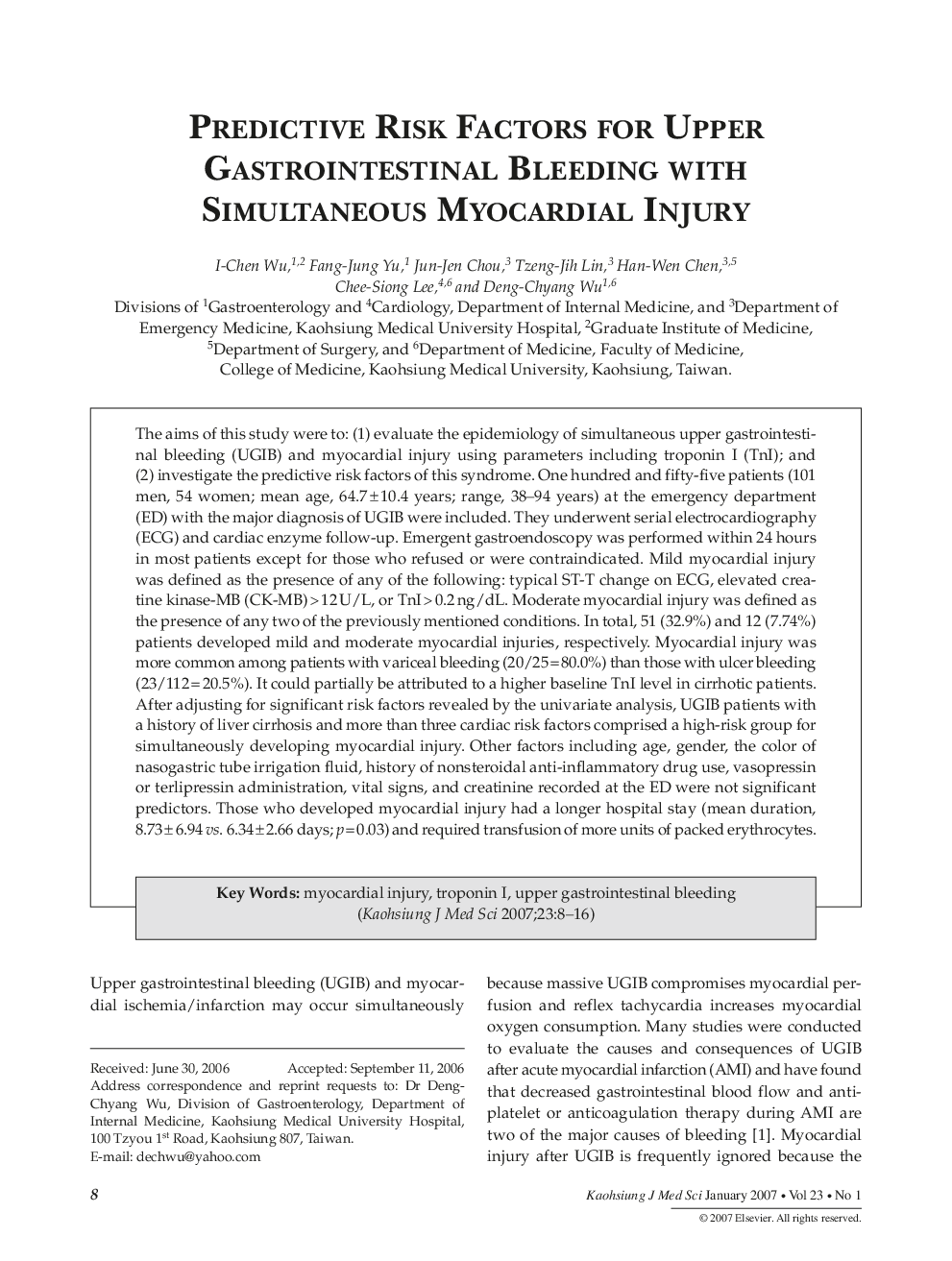| کد مقاله | کد نشریه | سال انتشار | مقاله انگلیسی | نسخه تمام متن |
|---|---|---|---|---|
| 3486836 | 1597026 | 2007 | 9 صفحه PDF | دانلود رایگان |

The aims of this study were to: (1) evaluate the epidemiology of simultaneous upper gastrointestinal bleeding (UGIB) and myocardial injury using parameters including troponin I (TnI); and (2) investigate the predictive risk factors of this syndrome. One hundred and fifty-five patients (101 men, 54 women; mean age, 64.7 ± 10.4 years; range, 38–94 years) at the emergency department (ED) with the major diagnosis of UGIB were included. They underwent serial electrocardiography (ECG) and cardiac enzyme follow-up. Emergent gastroendoscopy was performed within 24 hours in most patients except for those who refused or were contraindicated. Mild myocardial injury was defined as the presence of any of the following: typical ST-T change on ECG, elevated creatine kinase-MB (CK-MB) > 12U/L, or TnI > 0.2ng/dL. Moderate myocardial injury was defined as the presence of any two of the previously mentioned conditions. In total, 51 (32.9%) and 12 (7.74%) patients developed mild and moderate myocardial injuries, respectively. Myocardial injury was more common among patients with variceal bleeding (20/25 = 80.0%) than those with ulcer bleeding (23/112 = 20.5%). It could partially be attributed to a higher baseline TnI level in cirrhotic patients. After adjusting for significant risk factors revealed by the univariate analysis, UGIB patients with a history of liver cirrhosis and more than three cardiac risk factors comprised a high-risk group for simultaneously developing myocardial injury. Other factors including age, gender, the color of nasogastric tube irrigation fluid, history of nonsteroidal anti-inflammatory drug use, vasopressin or terlipressin administration, vital signs, and creatinine recorded at the ED were not significant predictors. Those who developed myocardial injury had a longer hospital stay (mean duration, 8.73 ± 6.94 vs. 6.34 ± 2.66 days; p = 0.03) and required transfusion of more units of packed erythrocytes.
Journal: The Kaohsiung Journal of Medical Sciences - Volume 23, Issue 1, January 2007, Pages 8-16